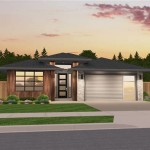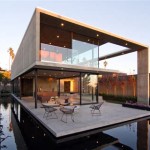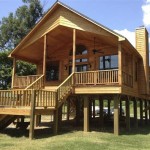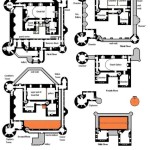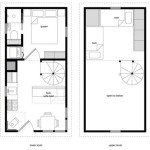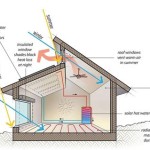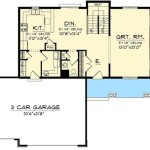Free Bat House Plans: Build A Home For Beneficial Creatures And Insects
Bat houses serve as artificial roosts designed to attract bats to residential areas, gardens, and farms. The construction and placement of these structures are crucial for providing suitable habitats for these flying mammals, which are increasingly facing habitat loss due to deforestation, urbanization, and agricultural expansion. Providing a bat house offers a safe haven and contributes significantly to the local ecosystem.
Attracting bats to a property can offer numerous benefits. Bats are voracious insectivores, consuming large quantities of insects each night. This natural pest control reduces the need for chemical pesticides, promoting a healthier environment for humans, plants, and other animals. Furthermore, bat guano, or droppings, is a potent fertilizer rich in nitrogen, phosphorus, and potassium, making it a valuable resource for gardening and agriculture. By providing a bat house, individuals can contribute to both conservation efforts and sustainable pest management practices.
The following information details the process of building a bat house, including selecting appropriate materials, understanding design considerations, and proper placement strategies to maximize occupancy.
Understanding Bat House Design Principles
The design of a bat house is paramount to its success in attracting and housing bats. Several key factors influence a bat house's attractiveness and suitability for bats, including size, internal chamber dimensions, ventilation, and surface texture.
Size and Chamber Dimensions: A bat house should be large enough to accommodate a colony of bats. Single-chamber bat houses are generally less attractive than multi-chamber designs. A multi-chamber house provides a variety of temperature gradients, allowing bats to select the optimal roosting location based on their individual needs and ambient conditions. The internal chambers should be approximately 3/4 to 1 inch wide. This narrow space mimics the crevices bats naturally roost in, providing a sense of security and facilitating clinging.
Ventilation: Proper ventilation is crucial for regulating the temperature inside the bat house, particularly during hot summer months. Bats are highly susceptible to overheating, and inadequate ventilation can lead to colony abandonment or even mortality. Ventilation slots should be placed at the bottom of the bat house walls to allow warm air to escape. The size and placement of these slots will vary depending on the overall size and design of the bat house. Generally, a small gap of approximately 1/2 inch wide at the bottom of the front and side walls is sufficient.
Surface Texture: Bats need a rough surface to grip and climb within the bat house. The interior surfaces of the chambers should be textured to facilitate clinging. This can be achieved by scoring the wood with a saw or using rough-cut lumber. Vertical grooves spaced approximately 1/2 inch apart provide an ideal surface for bats to grip.
Material Selection: The choice of materials for constructing a bat house influences its durability, thermal properties, and attractiveness to bats. Untreated wood is the preferred material, as it is non-toxic and provides a natural surface for bats to cling to. Plywood is a common choice for the exterior walls and roof, while rough-sawn lumber is ideal for the interior surfaces. Avoid using pressure-treated wood, as the chemicals used in the treatment process can be harmful to bats. Cedar and redwood are naturally decay-resistant and can be used for the exterior of the bat house.
Free Bat House Plans and Construction Steps
Numerous free bat house plans are available online. These plans provide detailed instructions and dimensions for constructing various types of bat houses. When selecting a plan, consider the local climate, bat species, and available resources. Adaptations may be necessary to suit specific conditions.
Materials List (Example for a Three-Chamber Bat House):
- 1 sheet of 1/2-inch exterior-grade plywood (4ft x 8ft)
- 1 piece of rough-sawn lumber (1 inch x 6 inch x 8ft)
- Exterior-grade wood screws (1 1/4 inch and 2 inch)
- Exterior-grade caulk
- Dark-colored exterior paint or stain (optional)
Tools Required:
- Saw (circular saw or hand saw)
- Drill with screwdriver bits
- Measuring tape
- Pencil
- Safety glasses
- Gloves
Construction Steps:
- Cut the Plywood: Using the chosen plan, cut the plywood into the required pieces for the roof, sides, front, back, and internal partitions. Ensure accurate measurements and clean cuts for a tight and durable construction.
- Cut the Rough-Sawn Lumber: Cut the rough-sawn lumber into the required pieces for the bat house's landing area and interior roosting surfaces. Score the roosting surfaces horizontally with a saw to create grooves for the bats to grip.
- Assemble the Bat House: Assemble the sides, front, and back pieces using wood screws. Ensure that the corners are square and the joints are tight.
- Install the Internal Partitions: Install the internal partitions to create the roosting chambers. The partitions should be spaced approximately 3/4 to 1 inch apart. Secure the partitions to the sides, front, and back of the bat house using wood screws.
- Attach the Roof: Attach the roof to the top of the bat house using wood screws. Overhang the roof slightly to protect the bat house from rain and sun.
- Create Ventilation Slots: Create ventilation slots at the bottom of the bat house by leaving a small gap between the front and side walls. A gap of approximately 1/2 inch is sufficient.
- Caulk and Paint (Optional): Caulk all seams and joints to seal the bat house and prevent water from entering. Apply a dark-colored exterior paint or stain to help the bat house absorb heat from the sun. Darker colors are generally preferred, especially in cooler climates.
Bat House Placement and Maintenance
The placement of a bat house is critical to its success. Factors such as sunlight exposure, proximity to water, and surrounding vegetation influence the likelihood of bats occupying the structure.
Sunlight Exposure: Bat houses should receive at least six hours of direct sunlight per day, ideally in the morning. This helps to warm the bat house and create a suitable roosting environment. In cooler climates, more sunlight exposure may be necessary. The ideal orientation is south or east-facing.
Proximity to Water: Bats often forage near water sources. Placing a bat house within 1/4 mile of a stream, pond, or lake can increase its attractiveness to bats. Water sources provide a reliable supply of insects, which are the primary food source for bats.
Height and Mounting: Bat houses should be mounted at least 12 feet above the ground, ideally 15 to 20 feet. This helps to protect the bats from predators and provides them with ample space to fly in and out of the bat house. Bat houses can be mounted on poles, buildings, or trees. Pole mounting is generally preferred, as it provides the most stable and secure mounting option.
Clear Flight Path: Ensure that there is a clear flight path leading to the bat house. Avoid placing the bat house near trees or bushes that could obstruct the bats' access. Bats need a clear, unobstructed path to fly directly into the bat house.
Monitoring and Maintenance: Periodically inspect the bat house for signs of occupancy, such as bat droppings (guano) on the ground below the house. If the bat house is not occupied after a year or two, consider moving it to a different location. Bat houses should be cleaned every few years to remove accumulated guano and debris. This can be done in the late fall or early winter, after the bats have migrated.
Attracting Bats: While there are no guaranteed methods for attracting bats to a bat house, several strategies can increase the likelihood of occupancy. Planting native trees and shrubs can provide habitat for insects, which serve as a food source for bats. Reducing or eliminating the use of pesticides can also help to protect the insect population and provide more food for bats. Allowing a small amount of water to accumulate at the base of the bat house can create a more attractive environment for bats.
By implementing these design principles, construction steps, and placement strategies, individuals can create a successful bat house and contribute to the conservation of these beneficial creatures. The presence of bats offers ecological benefits, including natural pest control and pollination services, making bat houses a valuable addition to residential areas, gardens, and agricultural landscapes.

Animal House Plans A Birdhouse Bat Box And Bee Hotel In One Dustin Bajer

How To Build A Bat House Fun Family Project

Animal House Plans A Birdhouse Bat Box And Bee Hotel In One Dustin Bajer
:max_bytes(150000):strip_icc()/100things2do-f9ca25a5440247b3a11b57a2170c9f77.jpg?strip=all)
6 Free Bat House Plans

Bat Houses Mass Gov

Build A Bat House Popular Woodworking

Bat House Woodlogger

How To Build A Bat House And Habitat In Your Backyard Tacoma News Tribune

4 Ways To Build A Bat Box Wikihow

How To Build A Bat Box With Diy Instructions Gardener S Path
Related Posts

